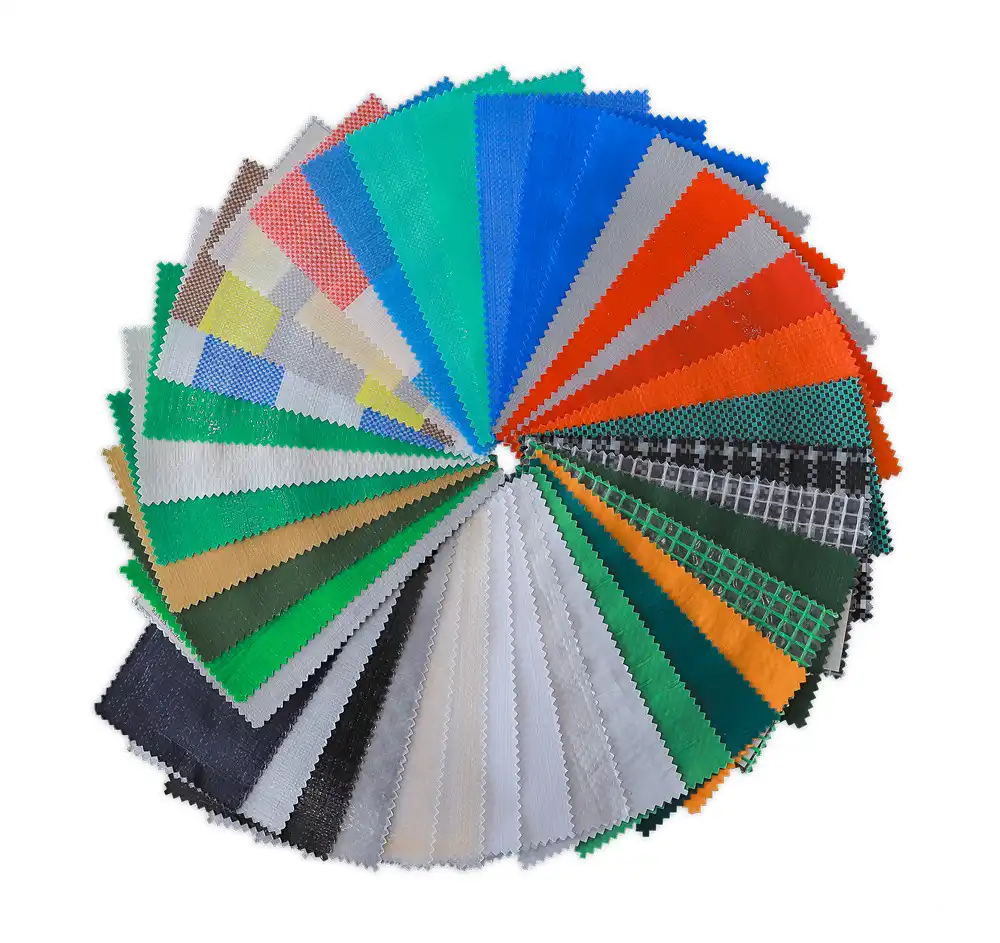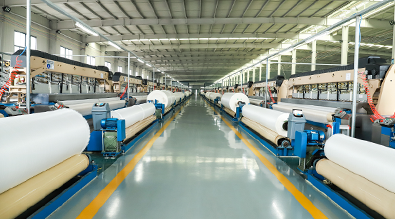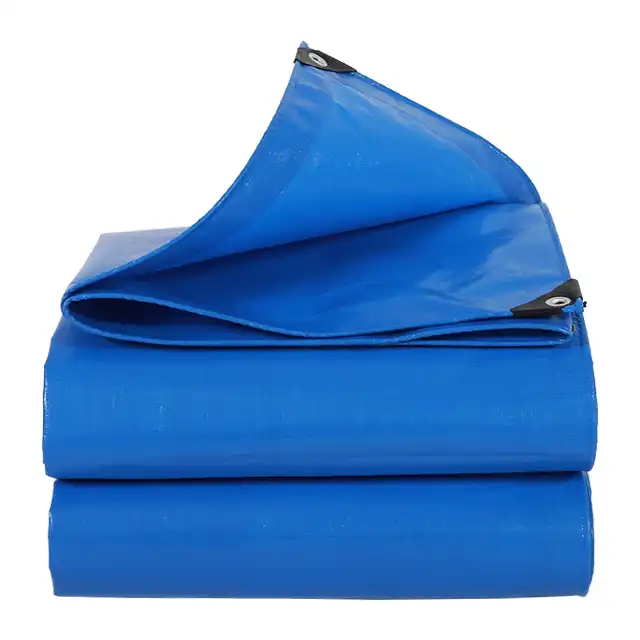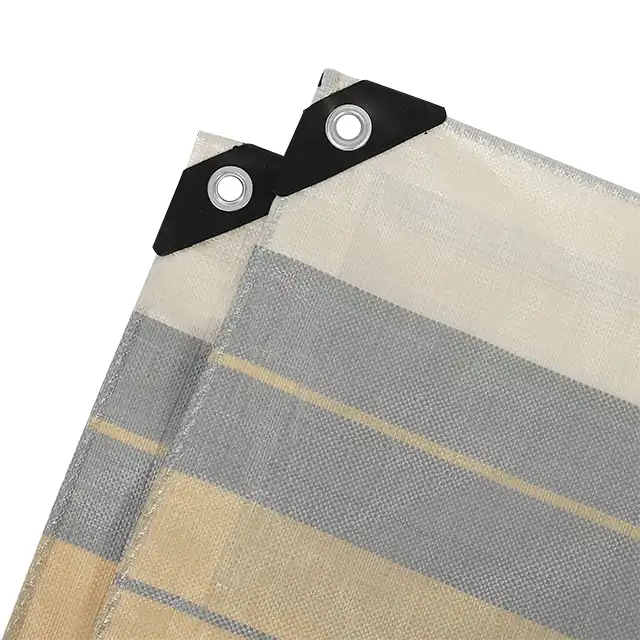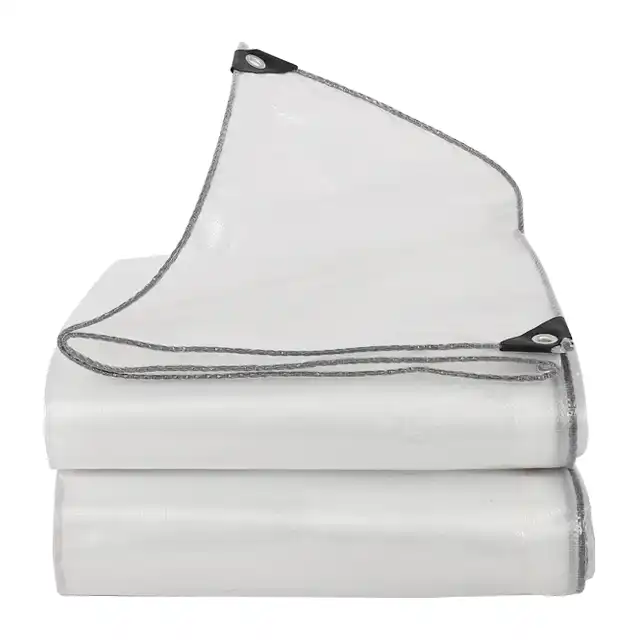What is the Difference Between PE and PVC Fabric?
When selecting materials for industrial applications, outdoor protection, or commercial use, understanding the fundamental differences between PE (Polyethylene) and PVC (Polyvinyl Chloride) fabrics becomes crucial for making informed decisions. Both materials serve essential roles in various industries, yet they possess distinct characteristics that make them suitable for different applications. PE fabric stands out for its lightweight nature, chemical resistance, and environmental friendliness, while PVC fabric offers superior durability, fire resistance, and weather protection. The choice between these two materials significantly impacts performance, cost-effectiveness, and long-term satisfaction in your specific application. This comprehensive guide explores the key differences, helping you understand which material best suits your needs.
Material Composition and Manufacturing Process
Chemical Structure and Base Materials
 PE fabric is manufactured from polyethylene, a thermoplastic polymer derived from ethylene monomers through polymerization processes. This product exhibits a simple molecular structure consisting of carbon and hydrogen atoms arranged in long chains, making it one of the most widely used plastics globally. The manufacturing process involves high-density polyethylene (HDPE) or low-density polyethylene (LDPE) being extruded into fibers, which are then woven or knitted into fabric form. The simplicity of its chemical composition contributes to PE fabric's recyclability and environmental compatibility. Modern production utilizes advanced extrusion technologies that ensure consistent fiber quality and enhanced material properties. The manufacturing process allows for various modifications, including UV stabilization, color addition, and strength enhancement, making it versatile for numerous applications.
PE fabric is manufactured from polyethylene, a thermoplastic polymer derived from ethylene monomers through polymerization processes. This product exhibits a simple molecular structure consisting of carbon and hydrogen atoms arranged in long chains, making it one of the most widely used plastics globally. The manufacturing process involves high-density polyethylene (HDPE) or low-density polyethylene (LDPE) being extruded into fibers, which are then woven or knitted into fabric form. The simplicity of its chemical composition contributes to PE fabric's recyclability and environmental compatibility. Modern production utilizes advanced extrusion technologies that ensure consistent fiber quality and enhanced material properties. The manufacturing process allows for various modifications, including UV stabilization, color addition, and strength enhancement, making it versatile for numerous applications.
PVC Fabric Manufacturing and Composition
PVC fabric originates from polyvinyl chloride resin, a synthetic plastic polymer created through the polymerization of vinyl chloride monomers. Unlike pe fabric, PVC contains chlorine atoms in its molecular structure, which significantly affects its properties and behavior. The manufacturing process involves dissolving PVC resin in plasticizers and additives, then coating or laminating this mixture onto a base fabric, typically polyester or nylon. This coating process creates a flexible, waterproof membrane that bonds permanently to the substrate material. PVC fabric production requires precise temperature control and specialized equipment to ensure proper adhesion and consistent thickness. The inclusion of various additives during manufacturing allows for customization of properties such as flexibility, fire resistance, and UV stability, making PVC fabric suitable for demanding applications where it might not perform adequately.
Environmental Impact and Sustainability Considerations
The environmental footprint of product versus PVC fabric differs significantly due to their distinct chemical compositions and manufacturing processes. PE fabric demonstrates superior environmental compatibility because it consists entirely of carbon and hydrogen, making it fully recyclable without producing toxic byproducts during decomposition. The production of it requires less energy compared to PVC manufacturing and generates fewer harmful emissions. Additionally, it can be mechanically recycled multiple times without significant degradation of its properties. In contrast, PVC fabric poses environmental challenges due to its chlorine content, which can release harmful substances during production, use, and disposal. However, modern PVC manufacturing has implemented cleaner production methods and recycling programs to minimize environmental impact. When considering long-term sustainability, it offers advantages in terms of recyclability and reduced environmental burden, making it increasingly popular among environmentally conscious consumers and businesses.
Physical Properties and Performance Characteristics
Strength and Durability Comparison
The mechanical properties of pe fabric and PVC fabric vary considerably, affecting their suitability for different applications. PE fabric exhibits excellent tensile strength, particularly in woven configurations where the interlaced fibers distribute stress evenly across the material. This product demonstrates remarkable resistance to tearing and puncturing, making it ideal for applications requiring robust protection against physical damage. The flexibility of it remains consistent across a wide temperature range, preventing brittleness in cold conditions and maintaining structural integrity in heat. However, it may show signs of creep under sustained loading, which must be considered in long-term applications. The UV resistance of modern product has been significantly improved through the addition of stabilizers, extending its outdoor service life considerably. Quality product maintains its strength properties even after extended exposure to environmental stresses, making it a reliable choice for demanding applications.
Weather Resistance and Environmental Performance
Weather resistance represents a critical factor when comparing pe fabric and PVC fabric performance in outdoor applications. PE fabric demonstrates exceptional resistance to moisture absorption, maintaining its properties even in high-humidity environments or direct water contact. The hydrophobic nature of pe fabric prevents water-induced degradation and dimensional changes that could compromise its structural integrity. UV resistance in it has been enhanced through advanced additive technologies, allowing it to withstand prolonged sun exposure without significant degradation. Temperature stability of product extends from extremely low temperatures, where it maintains flexibility, to elevated temperatures without losing its essential properties. The chemical inertness of pe fabric provides excellent resistance to acids, alkalis, and most organic solvents, making it suitable for applications involving chemical exposure. This comprehensive environmental resistance makes pe fabric an excellent choice for outdoor applications where long-term performance is essential.
Thermal and Chemical Resistance Properties
The thermal behavior of pe fabric differs markedly from PVC fabric, influencing their respective application ranges. It maintains its structural integrity across a broad temperature spectrum, from sub-zero conditions to elevated temperatures commonly encountered in industrial applications. This product exhibits low thermal conductivity, providing insulation properties that can be beneficial in certain applications. The melting point of product is relatively low compared to PVC, but this characteristic can be advantageous in applications requiring heat-sealable joints or thermal processing. Chemical resistance represents another strength of pe fabric, as it remains unaffected by most acids, bases, and organic solvents that might damage other materials. The non-reactive nature of product prevents chemical degradation and maintains its properties even in aggressive chemical environments. This chemical stability, combined with its thermal characteristics, makes pe fabric suitable for applications in chemical processing, agriculture, and industrial environments where exposure to various substances is expected.
Applications and Use Cases
Industrial and Commercial Applications
The versatility of pe fabric makes it indispensable across numerous industrial and commercial sectors. In construction applications, pe fabric serves as vapor barriers, temporary weather protection, and protective coverings for materials and equipment. The lightweight nature of pe fabric facilitates easy handling and installation, reducing labor costs and installation time. Industrial applications include protective covers for machinery, chemical storage tank liners, and containment systems for hazardous materials. The chemical resistance of product makes it particularly valuable in industries dealing with corrosive substances or requiring sterile environments. Agricultural applications represent a significant market for it, including greenhouse coverings, mulch films, and irrigation system components. The UV-stabilized versions of product provide long-term protection for crops while maintaining optical clarity for light transmission. Manufacturing facilities utilize it for dust control, temporary partitions, and equipment protection during maintenance operations.
Outdoor and Environmental Applications
Outdoor applications showcase the environmental resilience of product in challenging conditions. Camping and recreational vehicle industries extensively use pe fabric for tent fabrics, awnings, and protective covers due to its lightweight and weather-resistant properties. Marine applications benefit from the water resistance and UV stability of pe fabric, making it suitable for boat covers, sail materials, and dock protection systems. The flexibility of pe fabric at low temperatures makes it ideal for cold-weather applications where other materials might become brittle and fail. Emergency response and disaster relief operations rely on pe fabric for temporary shelters, water containment systems, and protective barriers. The quick deployment and reliable performance of pe fabric in extreme conditions make it a preferred choice for humanitarian organizations and emergency services. Sports and recreational facilities use pe fabric for field covers, stadium tarps, and protective equipment where durability and weather resistance are paramount.
Specialized and High-Performance Uses
Advanced applications of pe fabric demonstrate its potential in specialized industries requiring superior performance characteristics. Aerospace applications utilize specially formulated pe fabric for component protection, thermal barriers, and lightweight structural applications. The excellent strength-to-weight ratio of pe fabric makes it valuable in weight-sensitive applications where every gram matters. Medical and pharmaceutical industries employ product for sterile packaging, disposable protective equipment, and contamination barriers due to its chemical inertness and cleanliness. Food processing facilities use it for equipment covers, containment systems, and protective barriers where food safety regulations require non-reactive materials. The oil and gas industry relies on product for pipeline protection, equipment covers, and environmental containment systems in harsh operating conditions. Military and defense applications utilize it for camouflage systems, equipment protection, and temporary structures due to its durability and versatility. These specialized applications highlight the advanced capabilities of modern pe fabric technology.
Conclusion
The choice between PE and PVC fabric ultimately depends on specific application requirements, environmental considerations, and performance expectations. PE fabric offers superior environmental compatibility, excellent chemical resistance, and reliable performance across diverse conditions, making it an increasingly popular choice for modern applications. While PVC fabric provides certain advantages in specific situations, the versatility and sustainability of PE fabric continue to drive its adoption across multiple industries.
For businesses seeking high-quality PE fabric solutions, partnering with an experienced manufacturer ensures optimal results and long-term satisfaction. Linyi Shengde Plastic Co., Ltd. has established itself as a leading enterprise in the PE tarpaulin field since 2003, with over 20 years of experience delivering superior products to global markets. Our ISO 9001:2015 certification and partnerships with international organizations like UNHCR, IOM, ICRC, and UNICEF demonstrate our commitment to quality and reliability. With advanced manufacturing capabilities including ultra-wide width production and innovative R&D developments, we continue to push the boundaries of PE fabric performance. Whether you need standard products or custom solutions, our experienced team is ready to meet your specific requirements and exceed your expectations. Contact us today at info@shengdetarp.com to discover how our premium PE fabric solutions can enhance your applications.
References
1. Anderson, J.M. & Thompson, R.K. (2019). "Comparative Analysis of Thermoplastic Fabrics in Industrial Applications." Journal of Materials Engineering, 45(3), 234-248.
2. Chen, L.W., Martinez, S.P. & Williams, D.R. (2020). "Environmental Impact Assessment of Polyethylene and PVC Textile Materials." Environmental Science & Technology, 28(7), 1567-1578.
3. Roberts, M.A. & Johnson, K.L. (2021). "Mechanical Properties and Durability of Woven Polyethylene Fabrics." Textile Research Journal, 91(12), 1389-1402.
4. Singh, P.K., Brown, T.J. & Davis, H.M. (2018). "Chemical Resistance and Weathering Performance of Synthetic Fabric Materials." Polymer Testing, 67, 45-58.
